Lipoma Removal
Lipomas are benign fatty tumors that are often present in older dogs. Most lipomas are small and do not cause major problems. However, in some cases, these tumors can become so large that they cause discomfort for the dog--especially if they are located in an armpit or thigh region. Dogs that get one lipoma will often get others in different locations. Additionally, they can reoccur after removal. Rarely, lipomas can be malignant. This picture shows a large lipoma on the shoulder of a Golden Retriever.
In this picture, a paper clip has been placed over the lipoma for scale. This lipoma was between softball and volleyball-sized and caused this dog discomfort when she walked.
This picture shows the initial approach to lipoma. The skin incision is being made with a laser. (The red dot is the laser beam.) Laser surgery results in less bleeding and less swelling after surgery.
The picture below is part of the lipoma emerging from the skin incision. Many lipomas are directly under the skin. They can also be under muscle fibers or between muscle planes. The location of the lipoma can dictate the feel or firmness and mobility of the lipoma before surgery. This particular lipoma sat directly on the scapula (shoulder blade) and below several muscle layers. It weighed just over 2 pounds when it was fully removed.
Once the lipoma was removed, the free space where the tumor had resided, was closed so that fluid would not accumulate. Additionally, a drain was placed in the deepest part of the space the tumor had occupied. This is a picture of the surgical site after removal of the lipoma and placement of the drain. The drain was removed 4 days later and the stitches were removed after 14 days. The dog made a full recovery.
It is best to remove lipomas when they are smaller and less involved than in this case. The owners of this particular dog had just adopted her from a shelter. Thus it is unknown how long this lipoma had been present.

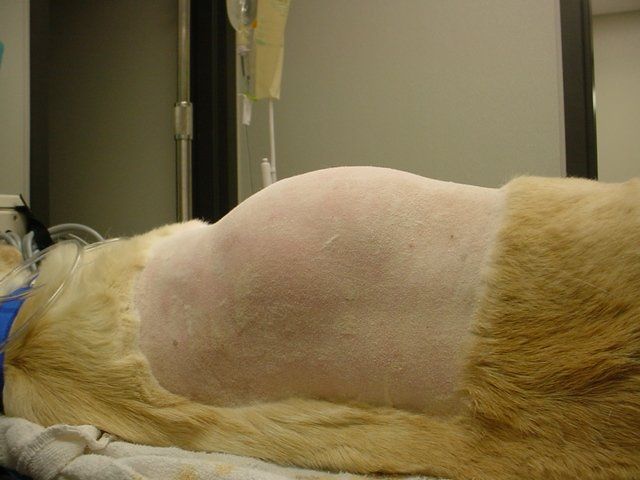
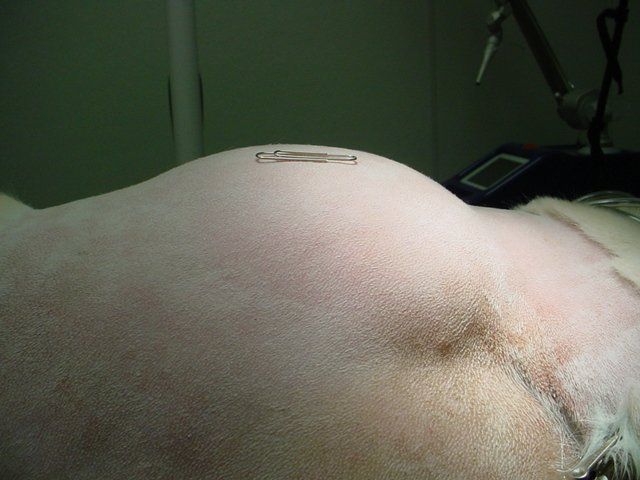
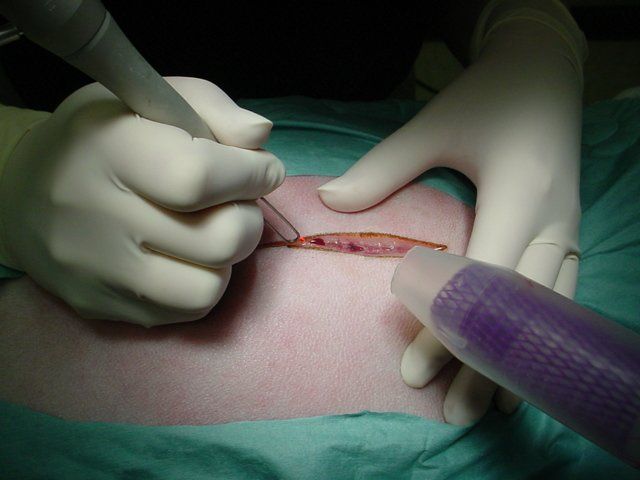
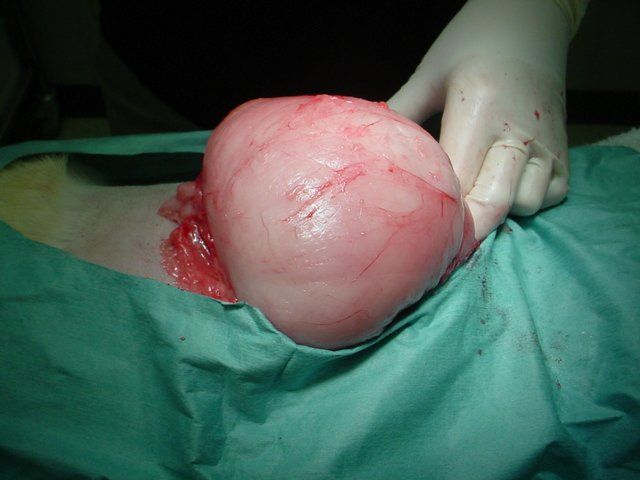
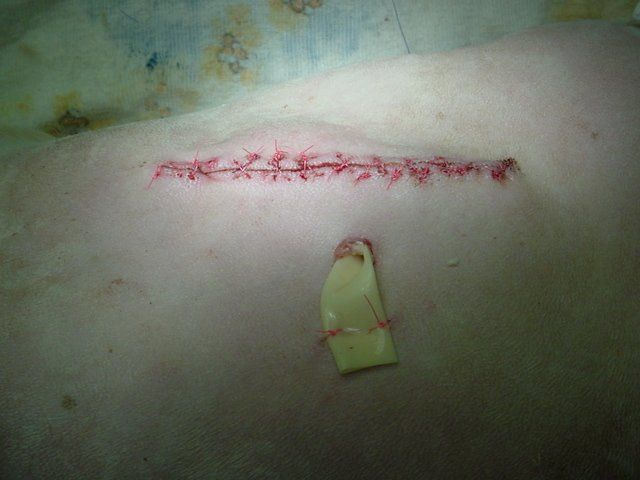

Share On: